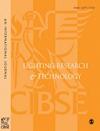隧道安全:一项调查驾驶员在不同行驶速度下接近隧道入口时的注视特性的试点研究
IF 2.2
3区 工程技术
Q2 CONSTRUCTION & BUILDING TECHNOLOGY
引用次数: 1
摘要
本文通过驾驶实验研究了不同车速下驾驶员进入隧道入口时注视的时空特征。这项研究是白天在一个相对较长的隧道中进行的。招募了6名经验丰富的驾驶员参与驾驶实验。采用非侵入式眼动仪采集预定车速(40 km/h、60 km/h和80 km/h)下,从隧道前200 m至隧道入口的瞳孔面积和注视点位置实验数据。根据注视点位置数据创建注视图(显示分布式数据的彩色编码图),以量化视觉行为变化。结果表明,车速对瞳孔面积和注视区有显著影响。注视面积和平均瞳孔面积与白天车速呈显著负相关。此外,驾驶员的注意力更多地集中在隧道入口入口、前道路路面和汽车控制轮上。结果表明,瞳孔面积与车速呈指数函数关系。并对研究的局限性和未来发展方向进行了讨论。本文章由计算机程序翻译,如有差异,请以英文原文为准。
Tunnel safety: A pilot study investigating drivers’ fixation characteristics when approaching tunnel entrance at different driving speeds
This study presents the results of a driving experiment study on spatiotemporal characteristics of drivers’ fixation when entering a tunnel portal with different driving speeds. The study was performed during the daytime in a relatively long tunnel. Six experienced drivers were recruited to participate in the driving experiment. Experimental data of pupil area and fixation point position (from 200 m before the tunnel to the tunnel portal) were collected by non-intrusive eye-tracking equipment for three predetermined vehicle speeds (40 km/h, 60 km/h and 80 km/h). Fixation maps (color-coded maps showing distributed data) were created from fixation point position data to quantify visual behaviour changes. The results demonstrated that vehicle speed has a significant impact on pupil area and fixation zones. Fixation area and average pupil area had a significant negative correlation with vehicle speed during the daytime. Moreover, drivers concentrated more on the tunnel entrance portal, front road pavement and car control wheeling. The results revealed that the relationship between pupil area and vehicle speed fitted an exponential function. Limitations and future directions of the study are also discussed.
求助全文
通过发布文献求助,成功后即可免费获取论文全文。
去求助
来源期刊

Lighting Research & Technology
工程技术-光学
CiteScore
5.40
自引率
16.00%
发文量
69
审稿时长
>12 weeks
期刊介绍:
Lighting Research & Technology (LR&T) publishes original peer-reviewed research on all aspects of light and lighting and is published in association with The Society of Light and Lighting. LR&T covers the human response to light, the science of light generation, light control and measurement plus lighting design for both interior and exterior environments, as well as daylighting, energy efficiency and sustainability
 求助内容:
求助内容: 应助结果提醒方式:
应助结果提醒方式:


